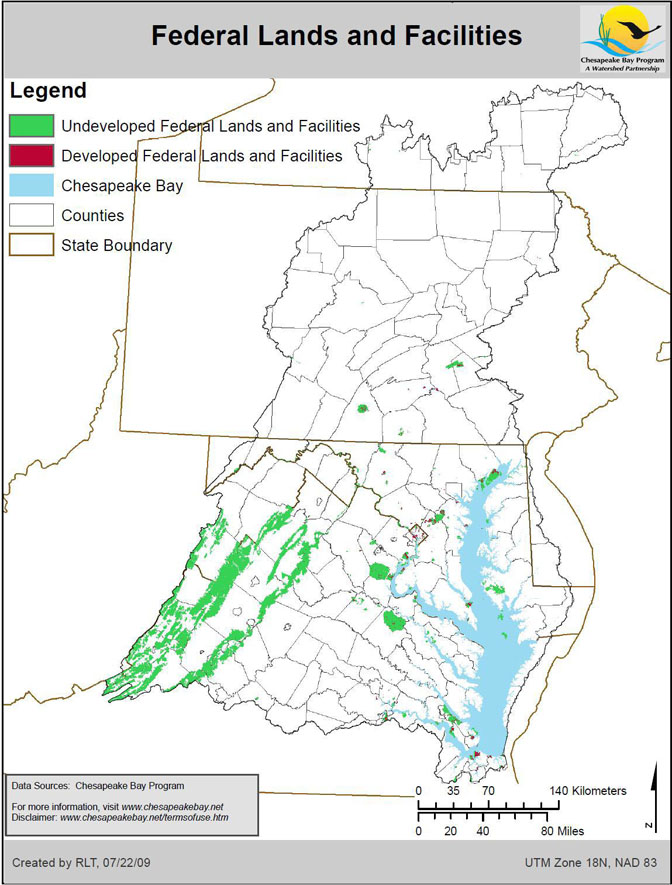Section 202(c) of the Executive Order charges the U.S. Department of Defense with leading the effort to develop a report and make recommendations to “strengthen stormwater management practices at Federal facilities and on Federal lands within the Chesapeake Bay watershed.” The U.S. Environmental Protection Agency is the lead agency for developing guidance on the best practices for stormwater management.
The federal government is the largest single landowner in the Chesapeake Bay watershed. It owns 7.8 percent of the land area in the watershed (agriculture, as a point of reference, accounts for 25 percent of the land area). Federal facilities in the Bay watershed range in type from highly industrial to rural. The largest pollutant contribution from federal agency lands derives from urban and suburban stormwater discharge.
A combination of regulations and voluntary measures is used to manage stormwater’s effects on the Chesapeake Bay. But in 2008, water quality was rated very poor. Only 21 percent of the goals established in the Chesapeake 2000 agreement were being met. This lack of progress and the emergence of new techniques argue powerfully for a new and improved approach to stormwater management.
Stormwater sources fall into three major categories: (1) stormwater discharges from new development and redevelopment projects, (2) stormwater discharges from existing facilities and developed lands, and (3) runoff from undeveloped lands. A full range of options for improving water quality through federal leadership in stormwater management are currently under consideration.
